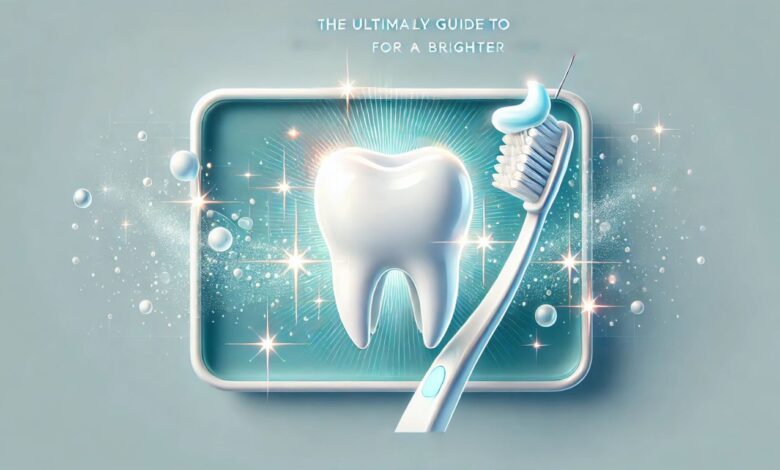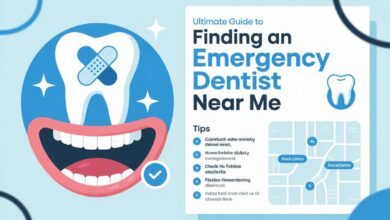The Ultimate Guide to the Best Whitening Toothpaste for a Brighter Smile

Introduction
A bright, white smile can boost confidence and enhance overall appearance. While professional whitening treatments exist, many people prefer the convenience and affordability of whitening toothpaste. But with so many options on the market, how do you choose the best whitening toothpaste? This guide explores the top products, key ingredients, benefits, and expert recommendations to help you achieve a dazzling smile.
How Whitening Toothpaste Works

Whitening toothpaste removes stains and lightens teeth using a combination of ingredients such as:
Key Ingredients in Whitening Toothpaste
- Abrasives (e.g., silica, baking soda) to polish and remove surface stains.
- Peroxides (e.g., hydrogen peroxide, carbamide peroxide) to break down deep stains.
- Enzymes and Fluoride to support enamel health and protect against decay.
- Charcoal or PAP (Phthalimidoperoxycaproic Acid) as alternatives to peroxides for gentler whitening.
Top 10 Best Whitening Toothpastes in 2025
Crest 3D White Brilliance
- Key Ingredients: Hydrogen peroxide, silica
- Pros: Fast results, effective stain removal
- Cons: Can cause sensitivity
- Best For: Quick whitening and surface stains
Colgate Optic White Renewal
- Key Ingredients: 3% hydrogen peroxide
- Pros: Deep stain removal, enamel-safe
- Cons: May feel slightly abrasive
- Best For: Removing tough stains from coffee or wine
Sensodyne Pronamel Gentle Whitening
- Key Ingredients: Potassium nitrate, fluoride
- Pros: Ideal for sensitive teeth
- Cons: Mild whitening effect
- Best For: People with tooth sensitivity
Arm & Hammer Advance White Extreme Whitening
- Key Ingredients: Baking soda, peroxide
- Pros: Budget-friendly, effective stain removal
- Cons: Some users dislike taste
- Best For: Affordable whitening
Hello Activated Charcoal Whitening Toothpaste
- Key Ingredients: Activated charcoal, coconut oil
- Pros: Fluoride-free, natural ingredients
- Cons: Can be messy, may erode enamel over time
- Best For: Those who prefer natural ingredients
Dr. Brite’s Extreme Whitening
- Key Ingredients: Hydrated silica
- Pros: All-natural, great for sensitive teeth
- Cons: Slower whitening results
- Best For: Gentle whitening over time
GLO Science Twice Whitening Toothpaste
- Key Ingredients: Silica, vitamins
- Pros: Sulfate-free, mild flavors, supports charity
- Cons: Small tube size, mild whitening effect
- Best For: Everyday use with mild whitening
hismile PEP+ Whitening Toothpaste
- Key Ingredients: PAP
- Pros: Peroxide-free, gentle on enamel
- Cons: Not ideal for deep stains
- Best For: Non-abrasive whitening
Marvis Whitening Mint Toothpaste
- Key Ingredients: Silica, fluoride
- Pros: Stylish packaging, great taste
- Cons: Expensive, mild whitening effect
- Best For: Luxury toothpaste lovers
Tom’s of Maine Simply White
- Key Ingredients: Silica, fluoride
- Pros: Natural ingredients, ADA-approved
- Cons: Slower results
- Best For: Eco-conscious consumers
How to Choose the Best Whitening Toothpaste for You

- For Fast Results: Choose a peroxide-based formula like Crest 3D White Brilliance.
- For Sensitive Teeth: Opt for Sensodyne Pronamel or his mile PAP+.
- For Natural Ingredients: Try Hello Activated Charcoal or Tom’s of Maine.
- For Deep Stain Removal: Select Colgate Optic White Renewal or Arm & Hammer Advance White.
- For Everyday Use: Consider GLO Science Twice Whitening.
Common Myths About Whitening Toothpaste
“All whitening toothpaste damages enamel.”
False. Many formulas contain enamel-strengthening ingredients.
“Charcoal toothpaste is the best option.”
Not always. It can be abrasive and wear down enamel.
“Whitening toothpaste works overnight.”
Most products take weeks for noticeable results.
“Peroxide-based toothpaste is harmful.”
Only in excessive use. When used correctly, it’s safe and effective.
“Whitening toothpaste and professional treatments give the same results.”
Professional treatments are stronger and more effective for deep stains.
Expert Tips for Maximizing Whitening Results

- Brush twice daily for at least two minutes.
- Use a soft-bristle toothbrush to prevent enamel erosion.
- Limit stain-causing foods like coffee, tea, and red wine.
- Rinse after eating to minimize discoloration.
- Use an electric toothbrush for better plaque removal.
- Consider using whitening strips or LED treatments for enhanced results.
- Visit a dentist regularly for professional cleanings and advice.
Frequently Asked Questions
1. Is whitening toothpaste safe for daily use?
Yes, most best whitening toothpaste formulas are safe for daily use if they are non-abrasive and contain fluoride.
2. How long does it take to see results?
Results vary, but most people notice a difference within 2-6 weeks of using the best whitening toothpaste consistently.
3. Can whitening toothpaste replace professional whitening?
Whitening toothpaste is effective for surface stains but may not match the results of professional treatments.
4. Does whitening toothpaste work on crowns or veneers?
No, the best whitening toothpaste does not change the color of dental restorations.
5. Can I use multiple whitening products together?
Yes, but consult a dentist to avoid overuse, which can lead to sensitivity.
6. Does fluoride in whitening toothpaste help with whitening?
Fluoride strengthens enamel, but it doesn’t whiten teeth directly. However, it helps maintain long-term whitening results.
7. What’s the best way to prevent stains after whitening?
Avoid dark-colored drinks, use a straw, and brush after meals.
8. Are there any side effects of whitening toothpaste?
Some users may experience temporary sensitivity or mild gum irritation.
Conclusion
Finding the best whitening toothpaste depends on your individual needs, whether it’s fast whitening, sensitivity protection, or natural ingredients. By choosing the right best whitening toothpaste and following proper oral care habits, you can maintain a radiant smile while keeping your teeth healthy. Ready to brighten your smile? Try one of our top picks today!
FOR MORE VISIT Dailynewsbizz.com




